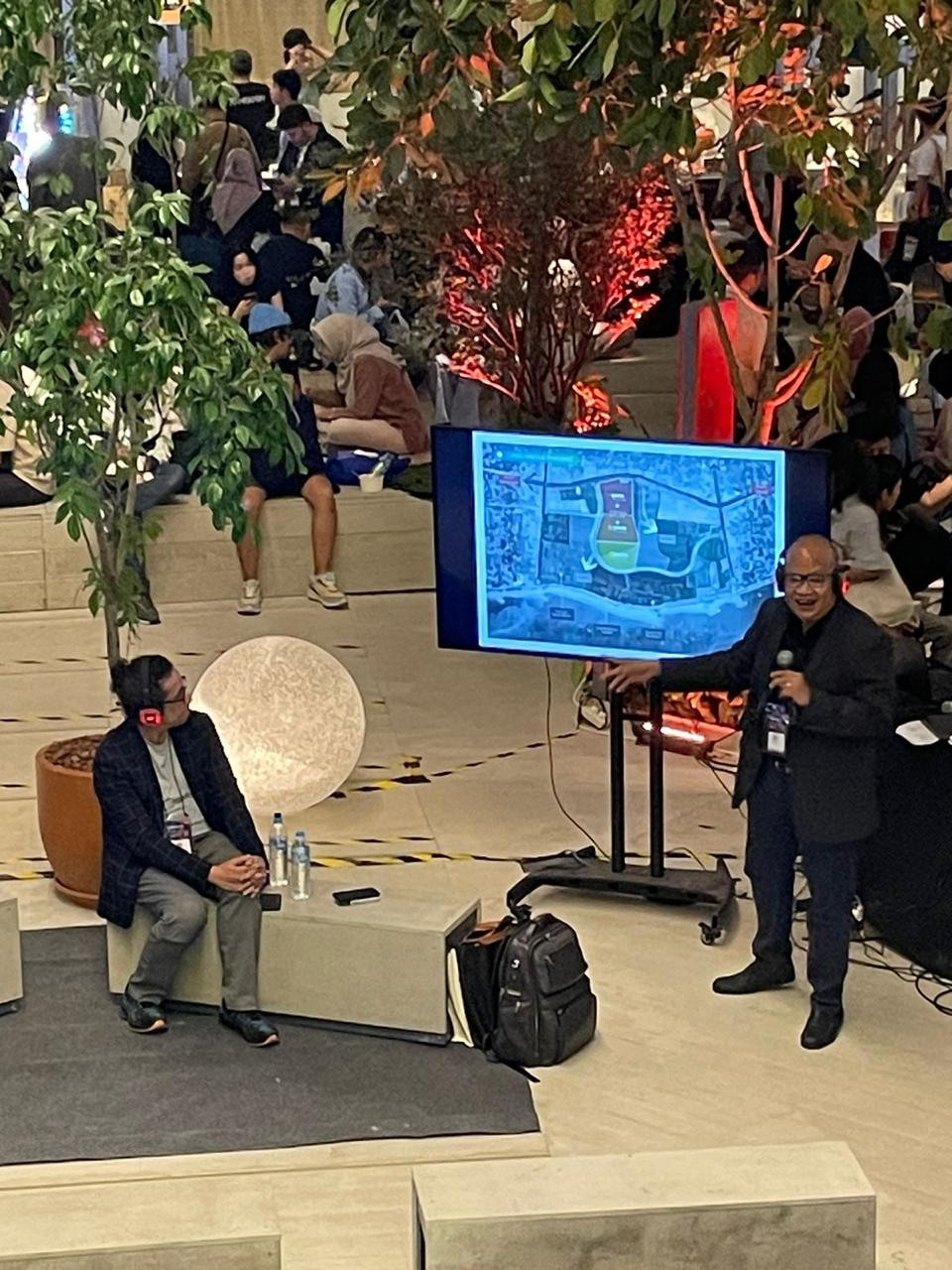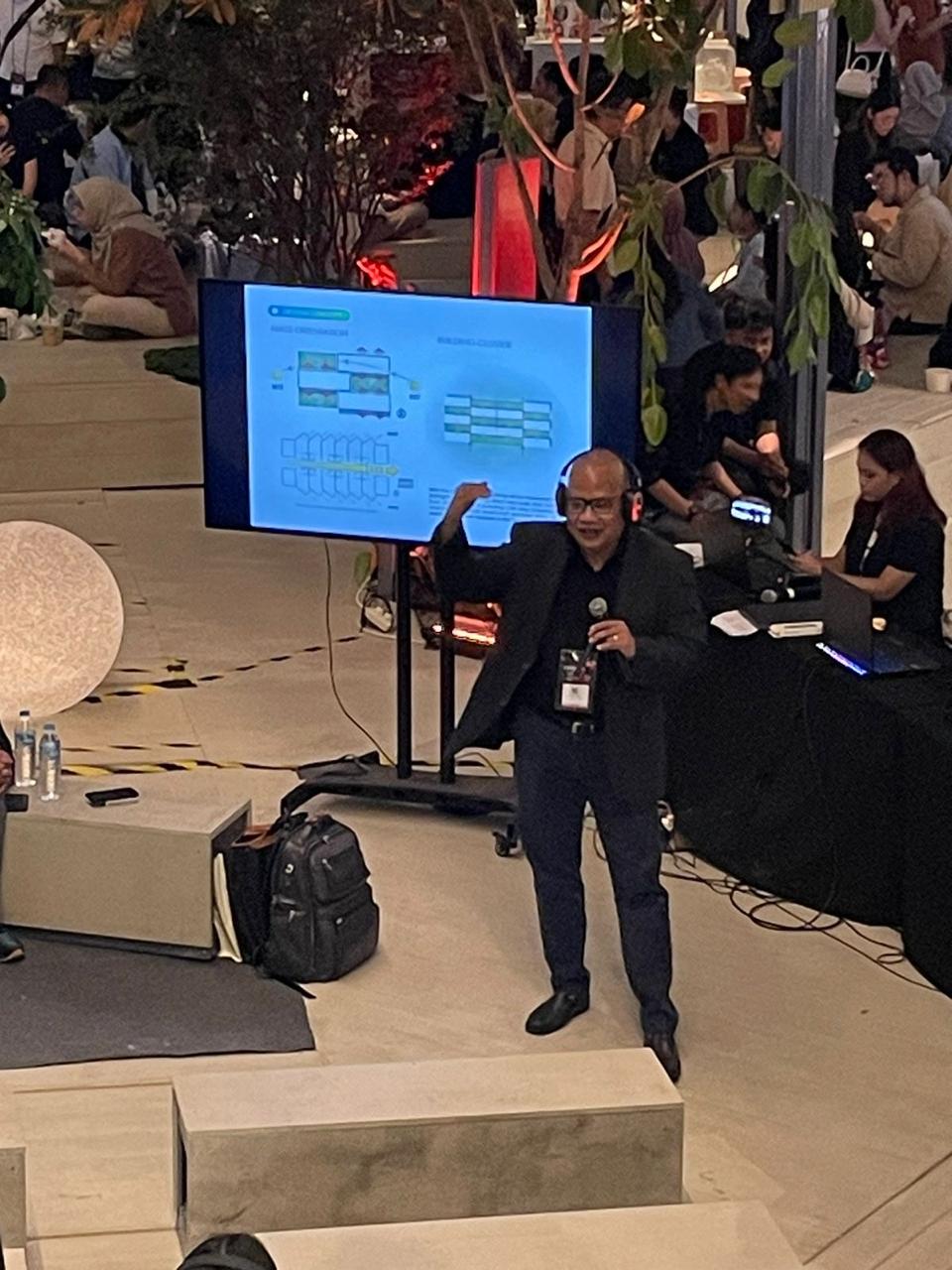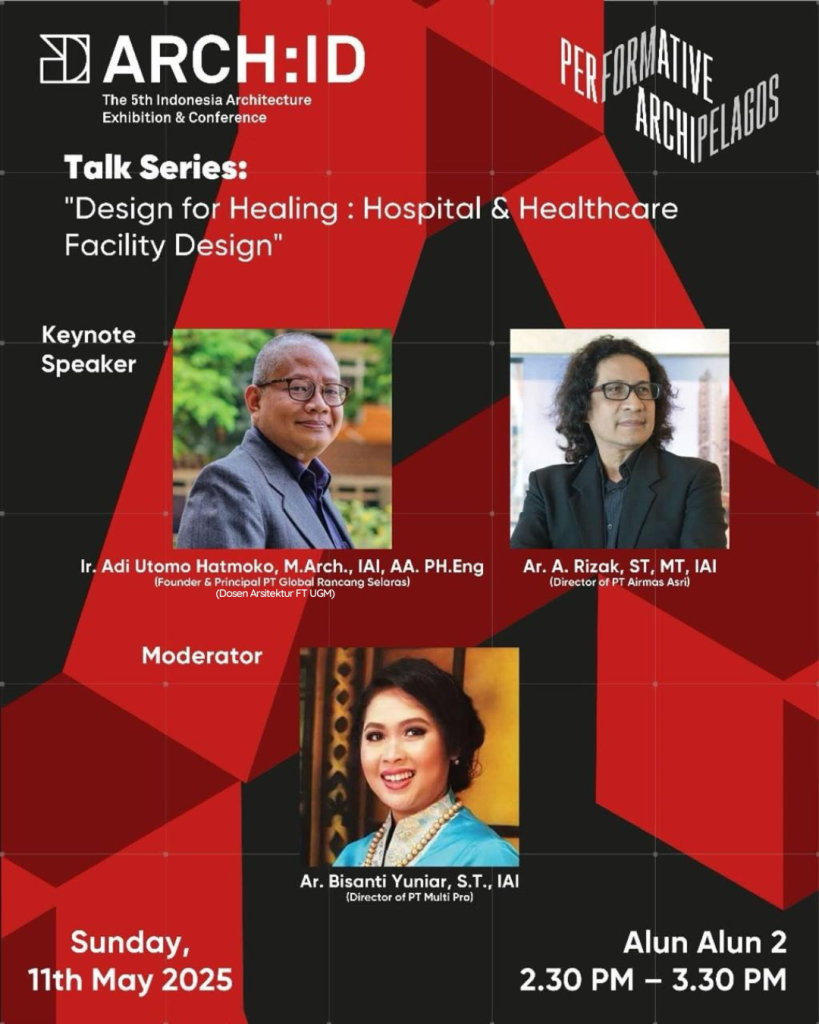Ir. Adi Utomo Hatmoko, M.Arch., a lecturer at the Faculty of Engineering, Universitas Gadjah Mada (UGM), and a professional architect, took part in the Talk Series at ARCH:ID 2025, an annual architecture exhibition held on Sunday, May 11, 2025, at ICE BSD, Tangerang. In the session titled “Design for Healing: Hospital & Healthcare Facility Design”, which took place from 14:30 to 15:30 WIB at Alun-alun 2, Pak Adi shared his insights and experiences in designing healthcare facilities that are practical and meet real needs. The event was attended by professionals, architecture students, and the general public from various regions.
In the first part of his session, Pak Adi guided the audience to understand the basics of healthcare facility design. He began by explaining that healthcare design must be closely connected to the type of medical services provided, patient needs, room functions and character, budget and space allocation, as well as human resources and available equipment. He continued by discussing general concepts in healthcare planning. He emphasized that healthcare facilities must support comfort, safety, and hygiene, which are essential for improving the quality of health services and protecting both patients and medical staff, directly contributing to SDG 3: Good Health and Well-being.
In the second part, Pak Adi explained how medical processes influence space design. He described how spatial programming and zoning should align with safe and logical medical workflows. A well-designed facility can reduce the risk of cross-infection and speed up patient care. Healthcare facilities should also support good accessibility and energy efficiency, in line with SDG 11: Sustainable Cities and Communities.
In the following parts, Pak Adi presented several case studies based on real projects he has worked on. These examples showed how hospital designs can respond to both the functional and psychological needs of users. He also highlighted technical aspects, including innovations in layout, use of sustainable and energy-efficient materials, and passive design strategies that optimize natural lighting. These strategies support SDG 9: Industry, Innovation and Infrastructure, SDG 12: Responsible Consumption and Production, and ultimately contribute to global climate solutions aligned with SDG 13: Climate Action.
Pak Adi’s presence at ARCH:ID reflects the important role of both academics and professionals in creating healing spaces that are inclusive, adaptable to future challenges, and committed to sustainability. His talk was a reminder that architecture is not only about form or style, it is about improving people’s lives and protecting the planet. The role of architects becomes even more meaningful when guided by the Sustainable Development Goals (SDGs), not just building structures, but shaping a better future.
Reported by Rindi Dwi Cahyati



